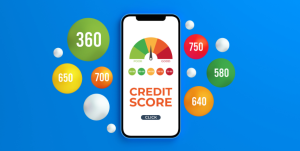Home equity borrowing
18 September 2019

Home equity is the difference between the current market value of your home and the outstanding balance on your mortgage. As you pay down your mortgage or as your home’s value increases over time, your equity builds. Home equity borrowing allows you to access this equity in the form of a loan or line of credit, and there are a number of options for borrowing.
Options for Home Equity Borrowing
Home Equity Loans:
Structure: A home equity loan provides a lump sum amount based on the equity in your home.
Interest Rate: Typically, home equity loans have a fixed interest rate, making monthly payments predictable.
Repayment: Repayment is usually done over a fixed term, with equal monthly installments.
Need-To-Know: It’s possible that you may have to pay closing costs for home equity loans.
Home Equity Lines of Credit (HELOC):
Structure: A HELOC is a revolving line of credit that allows you to borrow against your home equity as needed.
Interest Rate: HELOCs often have variable interest rates, which can lead to fluctuating monthly payments.
Repayment: Minimum monthly payments are required, and the repayment period is more flexible.
Need-To-Know: Check if your lender has a prepayment penalty – some require a minimum period of time you must hold a HELOC.
How Much Can You Borrow
With home equity loans, you can generally borrow up to 80% of your home’s equity. This is still a set loan amount – even if your home loses value during the lifespan of your loan, you are still responsible for the full amount borrowed. Home equity lines of credit (HELOC) can either be capped at a set value or base it on your home’s equity.
Advantages and Risks
Home equity borrowing does provide a number of advantages: they can come with lower interest rates compared to other forms of credit, the interest may be tax deductible, and funds can be used flexibly. However, borrowers must proceed with caution. When borrowing against your home, defaulting or falling behind on payments could put your home ownership at risk. Borrowers should consult with a financial professional to ensure that home equity borrowing is right for your purposes and is within your means.
How to Borrow on Your Home Equity
Assess Your Equity: Determine the current market value of your home and subtract the outstanding mortgage balance to assess your available equity.
Research Lenders: Compare offers from different lenders, considering interest rates, fees, and terms.
Understand the Terms: Thoroughly review the terms of the loan or line of credit, including interest rates, repayment terms, and any associated fees.
Calculate Affordability: Assess your financial situation to ensure you can comfortably afford the monthly payments and any potential changes in interest rates.
Use Funds Wisely: Whether it’s for home improvements or debt consolidation, use the borrowed funds wisely and in alignment with your financial goals.
Talk to a Professional: It’s essential to carefully consider the risks and benefits and ensure that home equity borrowing aligns with your overall financial strategy. A financial professional can help you find the best options and better understand the terms of your chosen home equity borrowing.
See Related Posts
popular articles
Categories
2
Today’s update
New Posts
blog read








